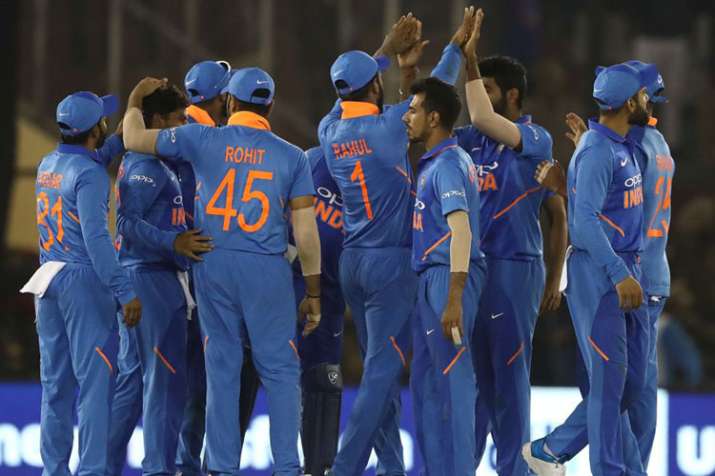
India will have to quickly put behind a massive bowling failure, sloppy fielding and tactical mistakes to tame a resurgent Australia in the series-deciding fifth ODI on Wednesday.
The cricketing world has applauded India's current bowling attack as one of its most potent but the failure to defend a mammoth total in Mohali came as a reality check for it.
Even the ever-reliable Jasprit Bumrah was taken to cleaners by Ashton Turner with ease, though the way captain Virat Kohli handled his quota of overs did leave many perplexed.
Kohli and the Indian team definitely missed the calming presence of Mahendra Singh Dhoni, whose understanding of game situations has been helpful in pressure situations.
Without doubt, the PCA stadium pitch was flat, offering nothing to the bowlers but a world-class attack was expected to defend a 350-plus total. The blazing knock by Turner, who was helped by the Indian team's butter-fingered fielders helped Australia turn it around.
In Ranchi, the team bowled first and in Mohali, Kohli opted to bat first, taking the dew into consideration but on both days, the opposite happened. It was dry when India chased in Ranchi but dew helped Australia's chase in the fourth ODI with the Indian bowlers struggling to grip the ball.
At the Feroz Shah Kotla ground, the wicket is usually low and slow but the team would not like to be surprised in the key game which makes the toss crucial.
Not many runs have been scored in the last two ODI matches played here with India losing to New Zealand by six runs in October 2016 and winning against West Indies by 48 runs in October 2014.
The Twenty20 games have been full of runs, though.
The hosts can heave a sigh of relief with Shikhar Dhawan striking form. The Delhi left-hander managed to silence critics who had been after him due to a prolonged lean patch.
At his home ground, he would look to get some more runs but it remains to be seen if the batters get a surface which assists stroke-play.
Going by history, the surface should be ideal for wrist spinners Kuldeep Yadav and Yuzvendra Chahalas the slow bowlers have done well in the previous games.
Kohli and the Indian team definitely missed the calming presence of Mahendra Singh Dhoni, whose understanding of game situations has been helpful in pressure situations.
Without doubt, the PCA stadium pitch was flat, offering nothing to the bowlers but a world-class attack was expected to defend a 350-plus total. The blazing knock by Turner, who was helped by the Indian team's butter-fingered fielders helped Australia turn it around.
In Ranchi, the team bowled first and in Mohali, Kohli opted to bat first, taking the dew into consideration but on both days, the opposite happened. It was dry when India chased in Ranchi but dew helped Australia's chase in the fourth ODI with the Indian bowlers struggling to grip the ball.
At the Feroz Shah Kotla ground, the wicket is usually low and slow but the team would not like to be surprised in the key game which makes the toss crucial.
Not many runs have been scored in the last two ODI matches played here with India losing to New Zealand by six runs in October 2016 and winning against West Indies by 48 runs in October 2014.
The Twenty20 games have been full of runs, though.
The hosts can heave a sigh of relief with Shikhar Dhawan striking form. The Delhi left-hander managed to silence critics who had been after him due to a prolonged lean patch.
At his home ground, he would look to get some more runs but it remains to be seen if the batters get a surface which assists stroke-play.
Going by history, the surface should be ideal for wrist spinners Kuldeep Yadav and Yuzvendra Chahalas the slow bowlers have done well in the previous games.

No comments:
Post a Comment